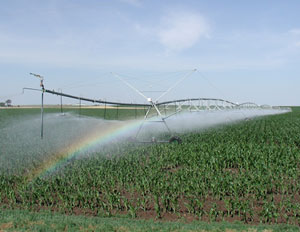 A landfill in Dallas, Texas will soon be the source of renewable biomethane that will be burned to create electricity.
A landfill in Dallas, Texas will soon be the source of renewable biomethane that will be burned to create electricity.
This story posted on the Environmental Protection Web site says that Clean Energy Fuels Corp. has inked a 15-year deal through its subsidiary, Dallas Clean Energy, to sell the biomethane produced at the McCommas Bluff landfill:
Beginning this month, the biomethane will be sold at fixed prices that increase in 2010 and 2011 and then remain fixed over the remainder of the agreement. The price for the “green” gas was not disclosed but represents a significant premium to the prevailing price for conventional natural gas.
The agreement calls for the sale of up to 4,500 MMBtus per day of biomethane from April 2009 through September 2010 and between 5,000–6,000 MMBtus per day of biomethane through March 2024. The actual volumes sold will depend on the gas recovery rates from the landfill and successful expansion of the gas processing facilities.
Shell Energy North America will act as the purchaser and supply the biomethane to the end-user—a utility that will use the biomethane in power generation to help meet applicable Renewable Portfolio Standards. Atmos Energy Corporation will provide intrastate transportation services from the gas processing plant.
 “This gas sale agreement validates selling renewable biomethane as a valuable, low-carbon fuel. It provides Clean Energy with a sound, long-term revenue stream and also supports expansion of the plant’s production capacity for additional gas sales, including potential use as vehicle fuel,” said Andrew J. Littlefair, Clean Energy president and chief executive officer “Many of our largest customers are showing interest in biomethane for their fleet vehicles as it is one of the best alternative fuels to meet new Low Carbon Fuel Standards coming in California and other states.”
“This gas sale agreement validates selling renewable biomethane as a valuable, low-carbon fuel. It provides Clean Energy with a sound, long-term revenue stream and also supports expansion of the plant’s production capacity for additional gas sales, including potential use as vehicle fuel,” said Andrew J. Littlefair, Clean Energy president and chief executive officer “Many of our largest customers are showing interest in biomethane for their fleet vehicles as it is one of the best alternative fuels to meet new Low Carbon Fuel Standards coming in California and other states.”
The McCommas Bluff landfill gas operation is among the biggest landfill gas operations in the country. Officials estimate it will continue to produce quality methane gas for 30 years after its closing in the year 2042.


 The nation’s leader in biodiesel making and making biodiesel plants has a new leader of its own.
The nation’s leader in biodiesel making and making biodiesel plants has a new leader of its own. Mr. Oh takes the reins from Nile Ramsbottom, who has served as Renewable Energy Group’s president since the company’s incorporation in 2006. Mr. Ramsbottom’s leadership helped launch REG as a premier producer and marketer of high quality biodiesel. In the nine years Mr. Ramsbottom has served at REG and its predecessor West Central Cooperative, the company’s biodiesel business has grown from a 1 million gallon-per-year batch plant to a network with the more than 300 million gallons of annual production capacity. Mr. Ramsbottom has agreed to forgo full retirement to help strengthen REG’s global presence. The new global sales position will be based in St. Louis.
Mr. Oh takes the reins from Nile Ramsbottom, who has served as Renewable Energy Group’s president since the company’s incorporation in 2006. Mr. Ramsbottom’s leadership helped launch REG as a premier producer and marketer of high quality biodiesel. In the nine years Mr. Ramsbottom has served at REG and its predecessor West Central Cooperative, the company’s biodiesel business has grown from a 1 million gallon-per-year batch plant to a network with the more than 300 million gallons of annual production capacity. Mr. Ramsbottom has agreed to forgo full retirement to help strengthen REG’s global presence. The new global sales position will be based in St. Louis. The 25th anniversary of the Fuel Ethanol Workshop (FEW) is fast approaching – June 15-18, 2009 in Denver, Colorado. Two awards will be presented this year to outstanding industry professionals: The High Octane Award and the Award of Excellence.
The 25th anniversary of the Fuel Ethanol Workshop (FEW) is fast approaching – June 15-18, 2009 in Denver, Colorado. Two awards will be presented this year to outstanding industry professionals: The High Octane Award and the Award of Excellence. The study, published in this week’s edition of the journal
The study, published in this week’s edition of the journal  The need for renewable fuels to replace fossil fuels is becoming more and more of a global necessity.
The need for renewable fuels to replace fossil fuels is becoming more and more of a global necessity.  Carbon dioxide has become an enemy of the Earth for its role in contributing to global climate change. One man wants to stop this unfair protrayal of “our friend carbon”. Dr. Norman Airs, the executive director of
Carbon dioxide has become an enemy of the Earth for its role in contributing to global climate change. One man wants to stop this unfair protrayal of “our friend carbon”. Dr. Norman Airs, the executive director of  As so many ethanol plants have closed in recent months, invester-owned ethanol start-up One Earth Energy LLC is planning to begin production on June 11, 2009. The 100 million gallon plant is located near Gibson City, Illinois.
As so many ethanol plants have closed in recent months, invester-owned ethanol start-up One Earth Energy LLC is planning to begin production on June 11, 2009. The 100 million gallon plant is located near Gibson City, Illinois.
 The State of Iowa is making a major investment to grow algae for biofuel at a southwest Iowa ethanol plant.
The State of Iowa is making a major investment to grow algae for biofuel at a southwest Iowa ethanol plant. A Longview, Texas-based maker of terminal tractors has introduced a hybrid electric version of the vehicle.
A Longview, Texas-based maker of terminal tractors has introduced a hybrid electric version of the vehicle.